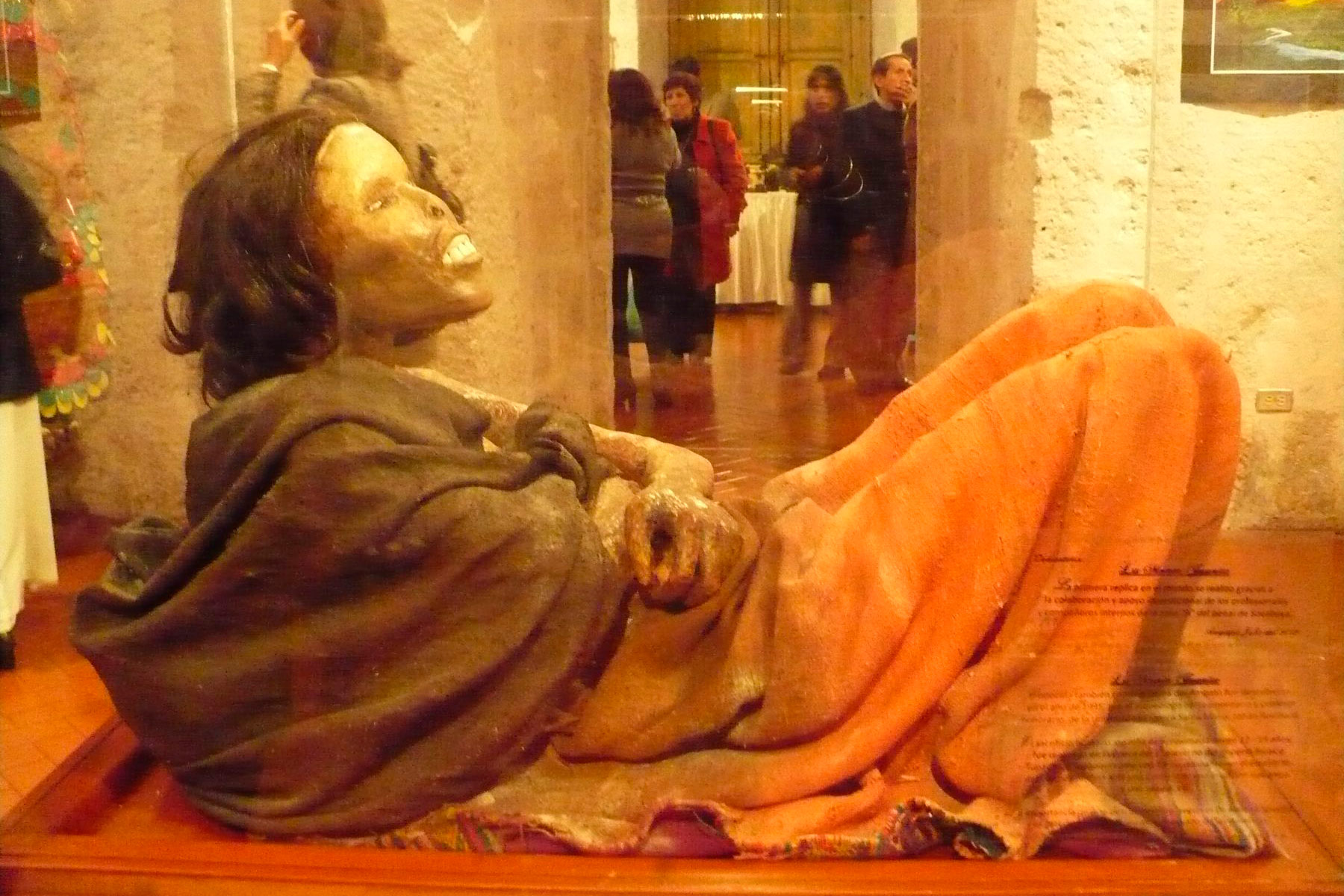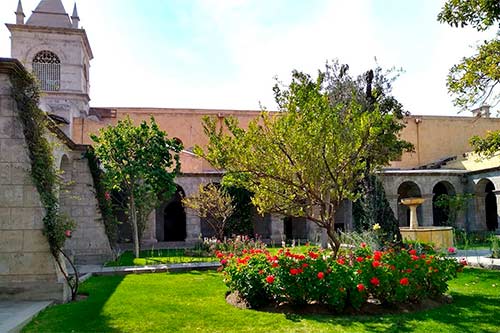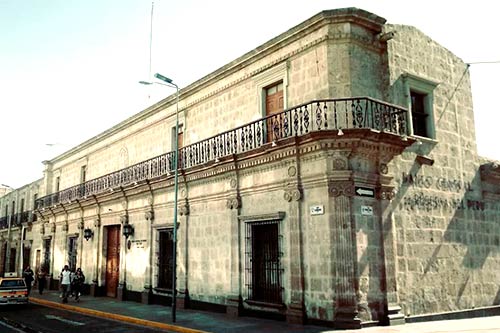Arequipa before the Inca period
The first inhabitants of the Arequipa region dedicated themselves to fishing, hunting (mainly of auquénidos) and gathering food of natural origin. These first people were grouped into families or ethnic groups and were nomads. Various studies indicate that the Arequipa territory, before the arrival of the aimaras, was occupied by puquinas ethnic groups. This is demonstrated by the discovery in 1942 of the Kasa-Patak puquina settlement.
With the cultural development of these ethnic groups, incipient irrigation systems and farmland were built despite the arid Andean geography. The first inhabitants of the current city of Arequipa were the Yarabayas and the Chimbas. Other ethnic groups located higher up in the Andes Mountains also stood out, such as the Colaguas and the Cabanas. Before the fourteenth century, the Chili Valley showed an incipient development in agriculture and ceramics.
Arequipa during the Inca period
It is estimated that the Incas arrived in the Chili Valley in the 14th century under the leadership of Mayta Cápac, who ordered a surveillance fence against the Yanaguara and Chumbivilca ethnic groups. At that time, the Incas were a chieftain that struggled to expand in the southern sierra in rivalry with their most fervent enemies, the Chancas. Once the Chancas were defeated, under the leadership of Emperor Pachacútec, the campaigns to conquer the Chili Valley began.
The Incas subdued the native peoples of Arequipa through the system of mitimaes and the practice of a campaign to teach the Quechua language and Inca religious practices. About the name ‘Arequipa’, the chronicles of the Inca Garcilaso de la Vega point out that when Mayta Cápac arrived in the Chili Valley, he pointed out in the Quechua language ‘Ari qquepay’, which means ‘Let’s stay here’. The truth is that, after the Inca foundation of Arequipa, he was assigned to distribute the hamlets of Yanahuara, Cayma, Paucarpata, Tiabaya, Socabaya, Chiguata and Characato.
During the Inca period, the current region of Arequipa was part of the Contisuyo, a region of great religious importance due to the existence of high snow-capped mountains, considered ‘apus’ or sacred gods. This is demonstrated by the findings of child sacrifices, the famous Capacocha ritual, in the inhospitable snows of Misti (5,822 masl), Chachani (6,057 masl), Pichu Pichu (5,664 masl), Coropuna (6,377 masl) and Ampato (6,288 masl). In the latter, for example, the mummified body of a girl was found, popularly baptized as ‘the girl Juanita’ (currently in the Andean Sanctuaries museum in Arequipa).
Colonialism in Arequipa
The city of Arequipa was founded on August 15, 1540 by the ruling lieutenant Garci Manuel de Carbajal and named ‘Villa de la Asunción de Nuestra Señora del Valle Hermoso de Arequipa’. Earlier, in 1534, the Spanish arrived in Cusco, founding a new Spanish city and consolidating their rule over the Incas. After the foundation, the lots were distributed, dedicating a space for the Cathedral, the Society of Jesus and naming Juan de la Torre and Díaz Chacón as the first mayor.
In 1571, Viceroy Francisco de Toledo granted the city of Arequipa the title of “very noble and very loyal” for its loyalty to the Spanish crown. And it is that the city was occupied mainly by people of Spanish origin. At that time, the main temples and colonial mansions were built with the most abundant volcanic material in the region: ashlar. The city of Arequipa played an important commercial role because it was located close to the ports of Quilca, Islay and Mollendo.
However, after more than three centuries of colonialism, Arequipa was no stranger to emancipatory currents. The city received with joy the entry of the troops of Mateo Pumacahua. Even part of its population adhered to the famous revolution of Túpac Amaru II, in Cusco. As in other regions of Peru, the independence movement ended up achieving its objective. In Arequipa, as a product of these wars and deaths, the figure of the young poet Mariano Melgar was erected, shot in 1815 by the Spanish army.
Finally, from the beginning of the viceroyalty of Peru in 1543 until its end in 1821, Arequipa adopted profound changes in its culture, religion, architecture, language, and more. It is worth noting the extirpation of the gods of Inca and pre-Inca origin to make way for the worship of the Christian gods. In summary, Arequipa had a lot of influence from the colonial era, which transformed cultural aspects that continue to this day.
Arequipa today
Arequipa is currently the second largest and most populous city in Peru, after Lima (according to the 2017 census, it has a population of 1,460,433 inhabitants). Its main economic sources are mining, trade, livestock, agriculture and tourism. The Colca Valley is its main tourist destination. In 2018, the entry of 298,442 visitors to the Colca Valley was registered. Other of its main tourist attractions are: the Santa Catalina Monastery, the Cotahuasi Landscape Reserve, the Lagunas de Mejía National Sanctuary and the Salinas and Aguada Blanca National Reserve.
Arequipa is also famous for offering one of the best cuisines in Peru. This is based on its picanterías where dishes such as shrimp chupe, solterito, stuffed rocoto, shrimp spicy, frozen cheese, Arequipeño adobo and more are prepared. The region also gained fame as a result of its dances, such as the wititi, the arequipeño montonero, the carnival, the Cacharpari Turks, the Chaco dance, and more. Arequipa is known as “the white city” due to its colonial and modern buildings made of ashlar stone. It is one of the main regions of Peru.
The museums of Arequipa that you should know
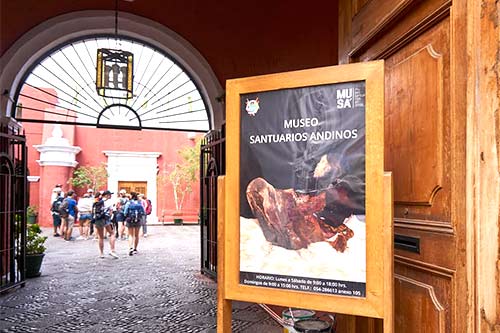
Andean Sanctuaries Museum of Arequipa
Famous Arequipa museum that exhibits the body of the girl sacrificed in Inca times, the ‘Juanita mummy’.
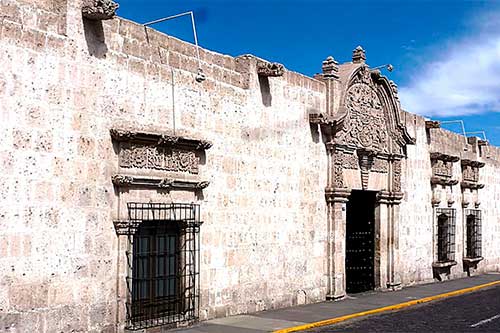
The Moral House
The La Casa Moral museum exhibits historical pieces from the 18th century, such as furniture, works of art and more.
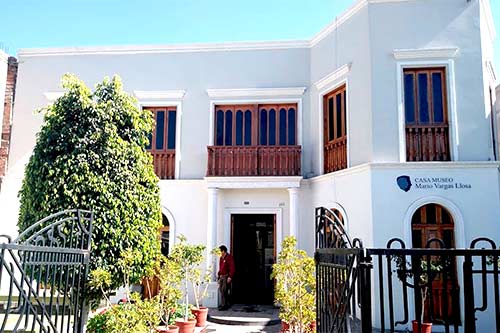
The Mario Vargas Llosa House Museum
House and museum where Mario Vargas Llosa, who was born in Arequipa, lived the Nobel Prize for Literature.
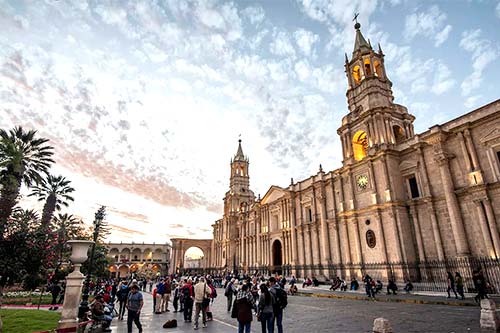
Arequipa Cathedral
The Cathedral displays colonial works of art such as canvases, sculptures, gold and silver objects, and furniture from the 16th, 17th, and 18th centuries.
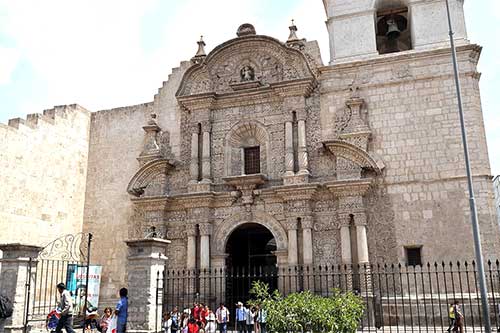
The church of the Company of Jesus
Church administered by the Jesuits that shows a beautiful colonial structure, as well as works of art inside.
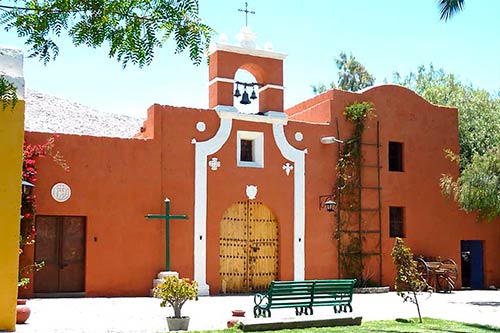
The Founder’s Mansion
Museum in the countryside of the city that was the house of Garcí Manuel de Carbajal, founder of the city of Arequipa in 1540.
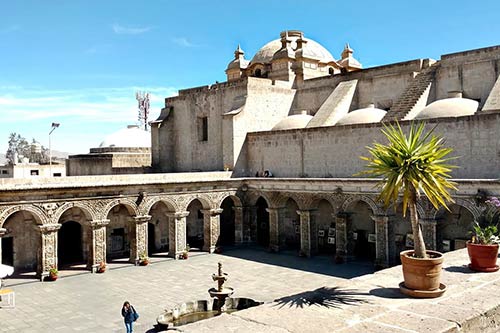
The monastery of Santa Catalina
Famous colonial museum of Arequipa that exhibits monastic life in the convent of Santa Catalina (16th century).
Questions and answers about the museums of Arequipa
What is the best museum in Arequipa?
The Museum and Convent of Santa Catalina is considered the best in the city of Arequipa. It receives around 238 thousand tourists a year.
What museums to visit in the city of Arequipa?
In the city of Arequipa you can visit museums such as: the Monastery of Santa Catalina, the Museum of Andean Sanctuaries, the Museum of Viceregal Art, as well as the museums of the Cathedral and the church of the Company of Jesus of Arequipa.
What museum exhibits the Juanita mummy?
In Arequipa there are museums that exhibit original colonial pieces, among which stand out: the Museum of Viceregal Art of Santa Teresa, the museum of the Monastery of Santa Catalina, the museum of the Company of Jesus and the museum of the Cathedral of Arequipa.
What museum exhibits colonial pieces in Arequipa?
There are several museums that exhibit colonial art in Cusco. Among them, the Museum of Religious Art of Cusco stands out, which exhibits the largest collection of viceregal art such as canvases, furniture and liturgical elements of silver and gold.
Where is the museum of Andean Sanctuaries?
The Andean Sanctuaries museum is located in the historic center of the city of Arequipa, at 110 La Merced street. General admission costs 25 Peruvian soles.
In which museum in Arequipa can I see original Inca pieces?
The Museum of Andean Sanctuaries exhibits original Inca pieces, found in the high snow-capped mountains of Arequipa in the child sacrifice ceremony, the Inca ‘capacocha’.
Is there a museum in the Colca Canyon?
In the Colca Valley you can visit the Yanque Museum, administered by the Catholic University of Santa María. The ethnographic museum shows the evolutionary process of the valley, its flora, fauna and traditions.
Where is the Santa Catalina Museum? How much does it cost?
The Santa Catalina museum, one of the most visited in Arequipa, is located in the historic center, at 301 Santa Catalina street. Its opening hours are Monday through Sunday from 9 am to 5 pm.
